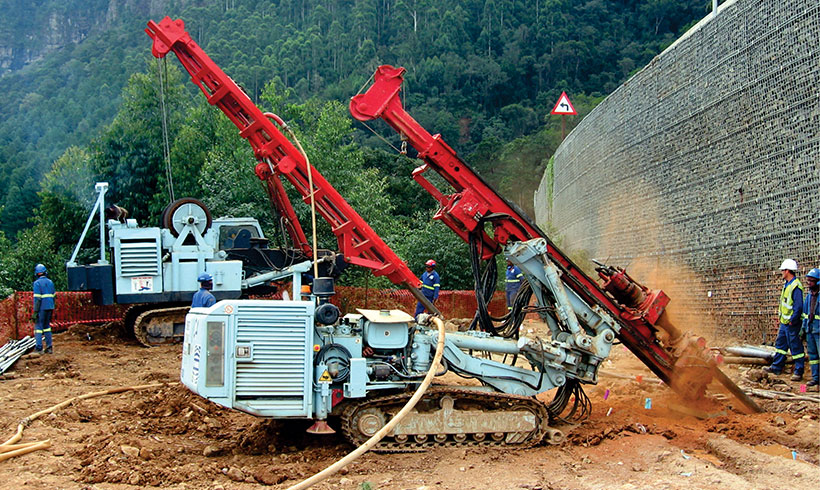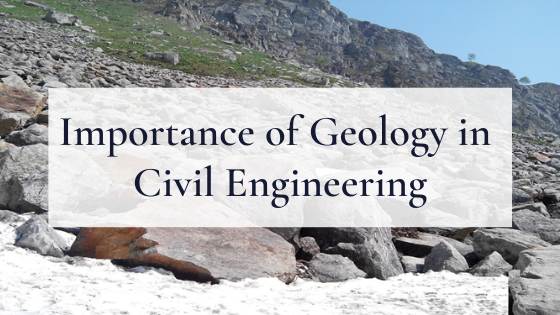Some Of Geotechnical Engineering For Construction Projects
Some Of Geotechnical Engineering For Construction Projects
Blog Article
An Unbiased View of Geotechnical Engineering For Construction Projects
Table of Contents8 Simple Techniques For Geotechnical Engineering For Construction ProjectsAll about Geotechnical Engineering For Construction ProjectsGeotechnical Engineering For Construction Projects Fundamentals ExplainedUnknown Facts About Geotechnical Engineering For Construction ProjectsSee This Report on Geotechnical Engineering For Construction ProjectsThe 7-Minute Rule for Geotechnical Engineering For Construction ProjectsWhat Does Geotechnical Engineering For Construction Projects Do?
and Kovacs, W. (1981 ), An Introduction to Geotechnical Design, Prentice-Hall, Inc. Deep Scan Technology (2023 ): Deep Scan Tech reveals concealed structures at the site of Denmark's highest structure. "Geofrost Coring". GEOFROST. Retrieved 20 November 2020. Han, Jie (2015 ). Principles and Method of Ground Improvement. Wiley. ISBN 9781118421307. RAJU, V. R.Ground Enhancement Technologies and Situation Histories. Singapore: Study Posting Services. p. 809. ISBN978-981-08-3124-0. Ground Enhancement Concepts And Applications In Asia. Pariseau, William G. (2011 ). Design analysis in rock auto mechanics. CRC Press. Hegde, A.M. and Palsule P (Geotechnical Engineering for Construction Projects).S. (2020 ), Efficiency of Geosynthetics Reinforced Subgrade Subjected to Repeated Car Plenties: Speculative and Numerical Studies.
Cengage Discovering, Stamford, 666 p. Atkinson, J., 2007. The auto mechanics of dirts and foundations. Taylor & Francis, N.Y., 442 p. Drifting Offshore Wind Wind Turbines: Feedbacks in a Sea state Pareto Optimal Designs and Economic Assessment, P. Sclavounos et al., October 2007. Nicholson, D, Tse, C and Penny, C. (1999 ). The Observational Method in ground design concepts and applications.
7 Easy Facts About Geotechnical Engineering For Construction Projects Described
Laboratory and area testing plays a critical function in this process. By removing samples from the earth's subsurface and applying a collection of tests, geotechnical designers can predict the practices of soil layers and review their suitability for numerous building efforts. The essence of geotechnical design in civil design can not be overstated, attributable to a number of variables: The preliminary action in any geotechnical research study involves determining the soil kind at the building and construction site.
The structure acts as the bedrock of any building task. Picking the ideal foundation type is a choice that pivots on the extensive analysis offered by geotechnical engineering.

Geotechnical site investigation is a critical step in the planning and execution of any building task. It includes the collection and analysis of data associated with the physical properties of dirt and rock beneath a recommended construction site. This details is crucial for the style and building of safe, secure, and lasting structures.
Some Known Questions About Geotechnical Engineering For Construction Projects.
, also known as subsurface exploration, includes a collection of tasks aimed at determining the soil, rock, and groundwater problems at a building and construction site. The primary goals are to determine possible geotechnical threats, examine the engineering homes of subsurface products, and give referrals for the design and construction of structures, maintaining walls, and various other frameworks.
This may include geological maps, airborne photos, previous examination reports, and historical data. The desk research aids in identifying prospective geotechnical problems and preparing the subsequent fieldwork. Following the workdesk study, a site reconnaissance is conducted to visually evaluate the website and its environments. This entails observing the topography, drainage patterns, existing frameworks, plant life, and any kind of signs of instability or erosion.
Examine This Report about Geotechnical Engineering For Construction Projects
Superficial test pits are dug deep into to directly observe and example the soil and rock. This approach works check here for examining the top layers of the subsurface and determining near-surface risks. Non-invasive geophysical approaches, such as seismic refraction, ground-penetrating radar (GPR), and electrical resistivity tomography (ERT), are made use of to map subsurface problems and spot anomalies.
Soil and rock samples gathered throughout the area examination are subjected to research laboratory testing to identify their physical and mechanical homes. These tests supply essential data for geotechnical analysis and style.
The key benefit of geotechnical website examination is ensuring the safety and stability of structures. By comprehending the subsurface conditions, engineers Read Full Report can create structures and various other architectural aspects that can hold up against the lots and ecological pressures they will certainly undergo. This minimizes the threat of negotiation, decrease, and architectural failing.
Not known Details About Geotechnical Engineering For Construction Projects
This makes sure efficient and risk-free construction methods. Geotechnical site examinations are commonly required by developing codes and laws.
This information is very useful for project supervisors, engineers, and contractors in developing sensible timetables, budgets, and contingency strategies. Geotechnical Engineering for Construction Projects. Skyscraper in a Coastal AreaIn a coastal city, a high-rise property structure was intended on a website with thought loosened sand deposits and a high water table. An in-depth geotechnical investigation, including borehole boring, CPT, and geophysical studies, was performed
Unknown Facts About Geotechnical Engineering For Construction Projects
Based upon these searchings for, the structure style was changed to include deep pile foundations extending right into secure strata, and ground enhancement strategies, such as vibro-compaction, were executed to reduce liquefaction risks. This aggressive technique guaranteed the safety and stability of the structure while preventing expensive post-construction remediation. Facilities Advancement on a Sloping TerrainA major infrastructure task, including the building of a highway and bridges, was intended on a hilly surface with steep slopes.

The Leaning Tower of Pisa (Italy), a famous architectural marvel, is notorious for its unexpected tilt from substantial geotechnical concerns. The tower's structure was inadequately created to deal with the soft, unsteady dirt beneath it, bring about unequal negotiation and its unique lean. Our world is populated with excellent infrastructure projectsfrom looming high-rise buildings to stretching bridgesall standing testimony to the advancement of the different building and construction devices and approaches available.
Geotechnical engineering is a specific area within civil design that focuses on studying the habits of planet materials. This branch dives deep into the groundinvestigating exactly how the soil, rock, and groundwater at a building and construction site can influenceand be affected bythe infrastructure that we put up on and into them. Before a solitary block is laid or a concrete foundation poured, geotechnical designers probe into the earthgathering crucial information concerning the site's dirt make-up, rock structure, and groundwater levels.
A Biased View of Geotechnical Engineering For Construction Projects

is a tool utilized to examine the integrity and load-bearing capability of heaps throughout installment, leveraging the concept of wave propagation. It enhances building and construction efficiency by supplying real-time analyses, therefore making sure secure and effective pile structures. One of the useful applications of geotechnical engineering entails deciding and performing the best methods for structure building and construction.
Pile driving represents greater than the plain act of putting architectural components right into the ground. On the contrary, it is a thoroughly coordinated procedure of moving a structure's load past the much less steady soil layers closer to the surfacedown to the a lot more considerable strata that lie underneath. In the situation of pile driving, consider just how geotechnical designers adeptly utilize this method to evenly disperse the framework's weight.
Report this page